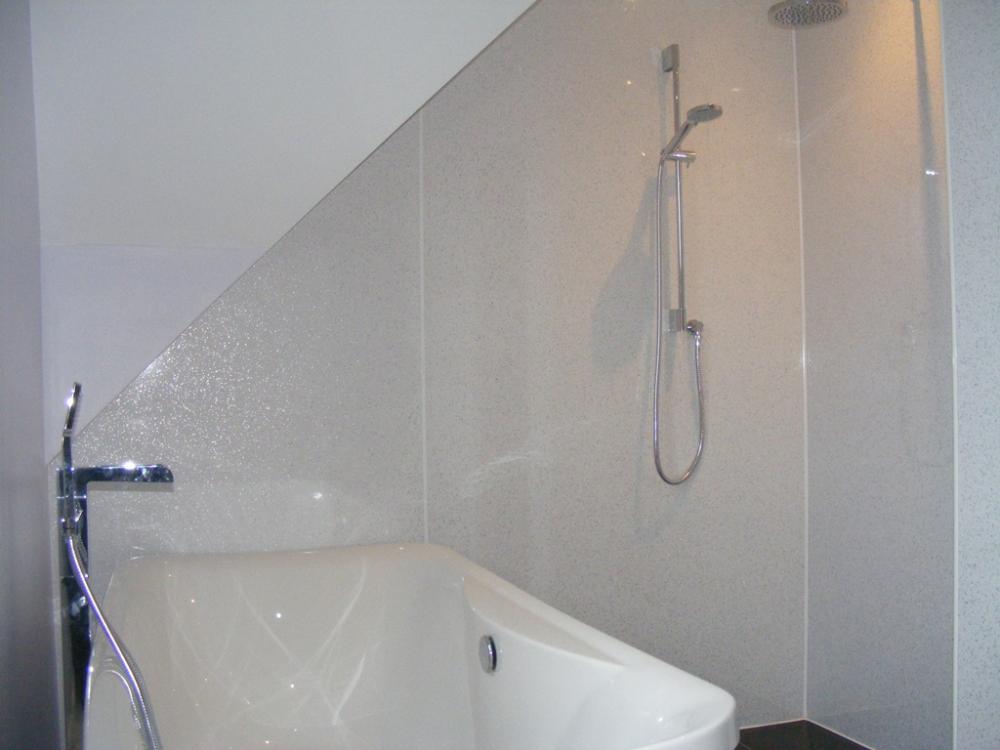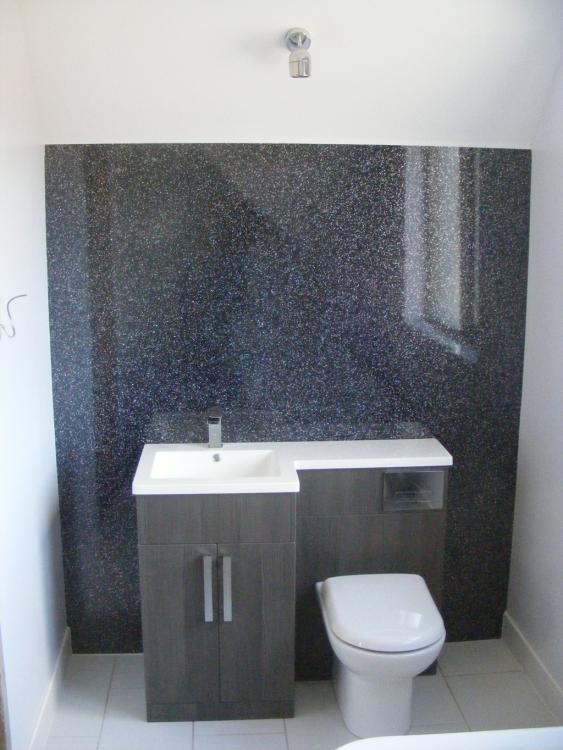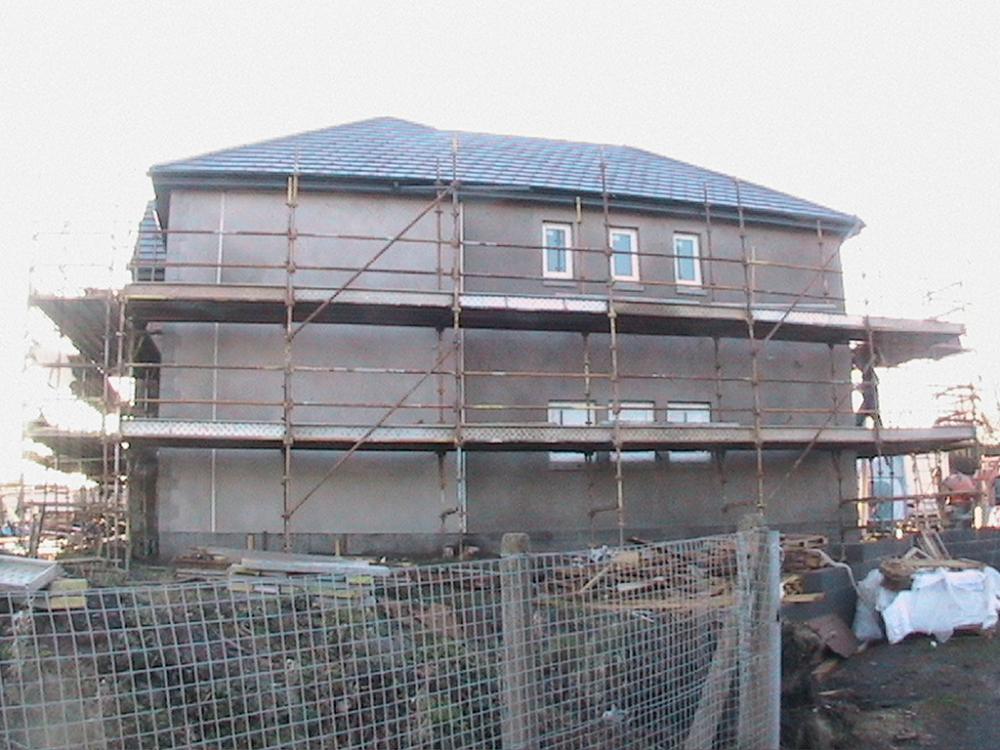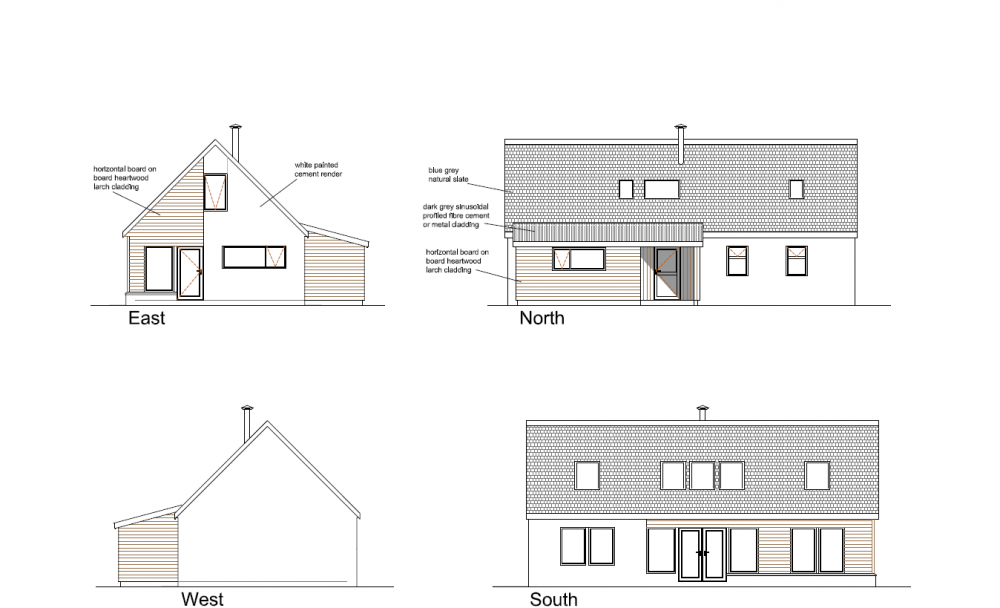Leaderboard
Popular Content
Showing content with the highest reputation on 03/30/18 in all areas
-
I only really started just after Christmas and today I finished it. A little quicker that another famous forum member. Strictly speaking it's not completely finished as I have not found the right glass screen to go between the shower and the bath. More pictures on my blog at http://www.willowburn.net/ look for the entry "main bathroom complete"5 points
-
Thought it might be useful to detail an accident that happened on our site during the main construction if only to prevent others from having a similar issue. I'm sure that we must have done some things wrong here, but there were others to blame in this tale too, and the events that unfolded seemed very bizarre to me. We used a registered scaffolding company to hire the scaffolding from and this was erected in August 2009. It was used for several months to do all of the main construction work and then towards the end of its time here someone fell off it. We used a particular builder to do all of the timber frame work, he supplied his own workers, and we paid him (and only him), in cash as he requested. We never paid any money directly to his team members. Towards the end of 2009 he sent a new guy here to do some work on the soffits and he arrived along with one of the regular team (the boss wasn't on site that day which wasn't that unusual as it was often just members of his team). The OH was living in a caravan on site at that time so greeted the 2 guys, one of whom he knew quite well as he had been working here for several months. He offered them tea and bacon rolls as he tended to do most mornings and went into the caravan to sort that out. About 10 minutes after they arrived there was a shout and the new guy had apparently fallen from the first level of the scaffolding landing on his arse (see photo to see the height of the first platform for reference). His co worker hadn't seen him fall and nor had my hubby who was in the caravan at the time. He was lying on the ground so my hubby called an ambulance. He said that the guy then got up, staggered to his car, put on his hi vis jacket and hard hat and sat in his car. When the ambulance arrived they suggested that he shouldn't have got into his car, and that they might get the fire brigade out to remove the roof in case he had damaged his neck. The guy refused their help at that point, said he wasn't having his car wrecked, and drove home. My husband reported the accident to the scaffolding company whereupon the owner drove to the site and attached an insurance certificate to the scaffolding dated that day. He said that the scaffolding wasn't signed off to use prior to that date even though it was hired back in August, several months before and had been used pretty much daily. Clearly he hadn't insured the site as he should have done. Health and Safety came to the site too and declared that some 'clips' were missing from the scaffolding, and put a notice on it declaring it not to be used. The scaffolding company came and put the clips on and it was then signed off as able to be used again. Apparently later that day the guy who fell off went to A&E and declared that he had hurt himself badly. He then engaged a no win no fee solicitor and took himself off to Australia to 'convalesce' or so he claimed. We reported the accident to our insurance company, and stated that the worker had been supplied by the contractor who was erecting the timber frame, and the scaffolding was supplied by the registered scaffolding company. The first issue we had was that the builder denied having supplied the worker. This left us with an issue as our insurance company said that we couldn't prove that the worker came via the main builder, and nor could we prove that we hadn't employed him direct. The scaffolding company collected the scaffolding and put themselves into liquidation meaning that the no win no fee lawyer came after us. My husband had to make statements and years later it was still going on with any settlement the insurance company was prepared to make reducing as time went on. It all seemed quite bizarre to us however that it was our insurance cover that was being claimed against when there were 2 other parties involved. In hindsight we should probably have taken a register of every person on site and who they were supplied from, and required every worker to sign in when they attended. We possibly should have known that scaffolding had to have an insurance certificate attached to it, but we believed that hiring from a registered company would have meant that we were completely covered as they would do the right things. Ironically my husband had refused to hire the scaffolding from anywhere other than a registered scaffold company in order to comply with H&S, but ultimately it did us no good!2 points
-
Having spent the summer months pottering in the garden, and generally ignoring the list of outstanding things to do inside, I finally summoned enough motivation to get things finished off. Fortunately, the list was fairly short so once started, was completed in a reasonable timescale. In the kitchen we tiled the splashback, fitted a decor panel underneath the bridging units (rather than having to see the underside of the units) and fitted a breakfast bar. Picking the tiles was probably the most challenging part, but we finally found something we both liked and agreed upon, and seems to work pretty well as a contrast to the units and worktop, as well as matching the colour scheme of the wider room. The decor panel has nicely finished off the underside of the bridging units. Ideally, this would have been done at the time the kitchen was fitted, and although was something I raised in the kitchen showroom, it was decided that it wasn't required... The breakfast bar was formed from 450mm deep lengths of worktop, the uprights specified as shelves so they were finished on all sides. A very simple construction secured to the back of the island by means of small brackets to a batten, and fix-all to the wall and floor. The height is set at 1000mm, which although taller than a standard breakfast bar, does give more leg room when sitting at it. I have to admit I wasn't keen on the idea of a breakfast bar, but have been won over, and it is a really usable addition to the room, primarily as a place to sit and chat when someone is working in the kitchen. I think solid oak worktop would have been preferable, but the final choice was down to asthetics, and again colour contrast was desired. In the utility room, I built a bench / shoe storage. A very simple but sturdy construction, I used oak worktop off-cuts for the uprights, and formed the shelf and top, using off-cuts from our oak door frames and door stops, glued to an off-cut of plyboard, all finished with Osmo. From a cost point of view, the materials were all free as they were scrap. The only cost was my time, a little wood glue and a few sanding pads for the orbital sander. Having built the bench, I had a couple of pieces of oak worktop left which I used to make a couple of little side tables. I had intended these to be only temporary, but like them so much that I plan to keep using them rather than replacing them. Elsewhere we had a couple more spots on our oak floor where it hadn't bonded to the slab. These only became apparent as we moved furniture around. I've previously relayed the reasons for this issue so won't repeat them. We used the same method of 'repair' using this product: http://www.fixafloor.co.uk/ but instead of drilling a larger hole and using a plug of timber flooring to finish, I drilled a hole of 4.5mm, injected the adhesive, then once cured 24 hours later, finished the drill hole flush using melted furniture repair wax. This in my view is a better method of finshing, looks less intrusive and was less time consuming compared to plugging. See below for comparison pictures. Filling all the nailheads on our oak skirtings and facings was not a task I was looking forward to, but in the end only took a couple of hours. Using a tip I picked up many years ago from a decorator, I used linseed putty, mixing 50/50 some natural and mahogany coloured putty for a final filler that was pretty well matched to our oak. Very easy to use, the putty remains flexible with the only finishing required being a wipe over the filled area with a dry cloth to remove any reside. Other than that, it's been settling into a routine of annual maintenance - servicing our MVHR (filters and cleaning the core), renewing the white silicone in our showers and servicing the treatment plant air pump. Next entry - Heating and DHW - How our ASHP based system has performed over the last 12 months.1 point
-
Back in 1971 I went to a festival at Weeley, near Clacton, where the facilities were just a long deep trench, with scaffold arranged over it. One perched on a horizontal scaffold pole and held tightly to the vertical poles, trying desperately not to fall backwards into the trench. I found this website a while ago: http://www.ukrockfestivals.com/weeley-festival.html , and after a lot of careful looking though the photos found one that has me in it, not that it's easy to recognise me, as I had the obligatory shoulder length hair and no beard back then.1 point
-
We used pre-formed GRP valleys. If using slate, I found that the type with the upstand in the centre look much neater, as the cut edges can be abutted to the upstand, making the valley less obtrusive looking. I still have two grey GRP normal valley sections (i.e. not the ones with the centre upstand) left over, as we had the wrong type supplied, so if anyone wants them they can have them if they collect them. This is what ours look like with the upstand bit in the centre:1 point
-
I should have spotted this earlier. I found that Jasun Envirocare will supply custom made filters for any MVHR at a much lower price than the manufacturer charges. In our case I bought five sets of filters (10 filters in total, 5 G4 and 5 F7) custom made to fit our Genvex Premium 1L for a bit less than the price of 1 set of filters from the UK Genvex agent. As far as I can see the filters look absolutely identical apart from the labels, and even have the same colour filter material, same number of pleats and identical looking card frames. I suspect that someone, somewhere, is making loads of money on high priced filters.1 point
-
Best way to get someone's attention (other than the 1st-level CSC team) is posting at https://community.plus.net/t5/Fibre-Broadband/bd-p/Fibre If your post doesn't get any substantive attention from a Plusnet expert, mention a superuser, such as Townman and ask for an escalation.1 point
-
When we first started we spent 2 days at the NEC show and went to most of the seminars of relevance to us over those 2 days. Really useful. Yes, most of the firms there are by nature high profit. But certainly when first starting out it was well worth it for us to go. You can browse, learn what's available, compare methods, ask questions, get prices.... and then go off and find the best prices once your back home. We found them very worthwhile and interesting. Once we'd started the build there was no point in us going to them, but they were great for helping shape our ideas and having a look at actual materials and so on in the early stages. It also makes you realise just how many people are interested in self build/custom build.1 point
-
By contrast, I have a ~1.5km long copper pair connected via FTTC and VDSL 2 and struggle to get better than 4 to 5 Mb/s.1 point
-
There so heavy that mortar wouldn’t make any difference also you will need dpc under each or a continuous line of dpc like I did1 point
-
Just a thought. Give the lights to the sparky and say "let me know when your done so I can pay you" ?1 point
-
The micro-brewery though will have to start in the utility room, not the shed. She doesn’t know that yet...1 point
-
1 point
-
Very neat. I like the idea of the decor panel under the bridging units.1 point
-
1 point
-
Who was it that was asked to show how far apart the staples were on the VCL. I may have mentioned it before, but in my view, there really needs to be a 'one-stop shop' at the council where you can deal with all the people necessary. Probably be worth the utility companies putting reps in as well. I could easily be paid for by the larger building supply companies having 'sponsored walls', would show up TPs ridiculous pricing too.1 point
-
The thing that really bugs me is the massive inconsistencies across planning, conservation and building regulations inspection. The systems are well and truly broken when, as discussed here frequently, some individuals are made to jump through a near-impossible series of hoops, whilst others seem to get what looks like a free pass through the system. There needs to be a root and branch reform of all three areas, with standards that are regulated and maintained so that they are common across the whole of each country within the UK. The fact that one town can approach approval of something in one way, and another a few miles down the road can approach approval in a totally different way, is just farcical, as well as being exceptionally frustrating. In my case I found both the planning officer and the first and last building inspector brilliant, the first conservation officer was an ignorant PITA who didn't even know what common building materials were when standing in front of them, the Environment Agency were a total PITA over run-off from our site to the adjacent stream, but were more than happy for me to run sewage treatment plant effluent into it, and generally caused me a lot of pain and grief over levels for flood protection that were, and are, barking mad, when you look at the true risk (rather than that which a bunch of undergrads did as a project, which is what they used...........).1 point
-
There was an extensive and involved thread on this last year: https://forum.buildhub.org.uk/topic/2376-principal-designer-role/ And a good summary of the thread by @recoveringacademic, here: https://forum.buildhub.org.uk/topic/2514-cdm-2015-and-the-domestic-client/1 point
-
This is surprisingly succinct for a public sector publication. With regard to the definition of a "Domestic Client" is says... If I live in rented accommodation elsewhere but have title to the new build plot and intend this property to become my only home, does the new build site become my "own home" from the moment a JCB digs the first foundation trench?1 point
-
1 point
-
Sounds bad but most companies who can afford to exhibit at shows like this are high profit companies. I remember lots of archietects, ufh companies and glazing/window companies. The 4 or 5 questions you asked above are all discussed here already.1 point
-
Most people do not read. Especially on a computer screen They skim, pause, read, skim on. STOP at KEY words. Then think and possibly respond. Look at the dense text you present above. You know it inside out and backwards The reader doesn't, and probably doesn't care either. Your message is a high-stakes one. Sent to someone who doesn't give a toss. She has 55 others to read before having a nasty commute home. If it's a high-stakes message, make it visually easy for people to access your message. Thus 1. The architects drawings (above), refer to details under these headings as do the structural drawings and calculations in terms of charring. External walls within 1000mm of a boundary. and are clad with fire cement tiles and are in line with the architects specification the tile specification will be as Marley Thrutone and are rated CLASS 0 as is required within 1000mm of a boundary. Details here. There are loads of other visual tricks to apply. Here's an online resources which, with a few tweaks, will help Make it easily legible to a tired, pissed off, distracted idiot. Make it easy for a local Donald Trump to read.1 point
-
1 point
-
1 point















